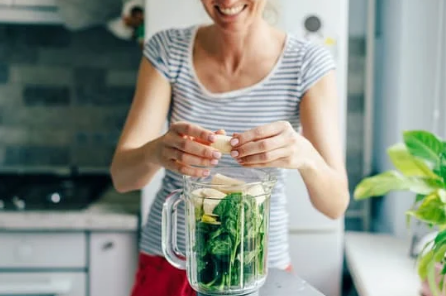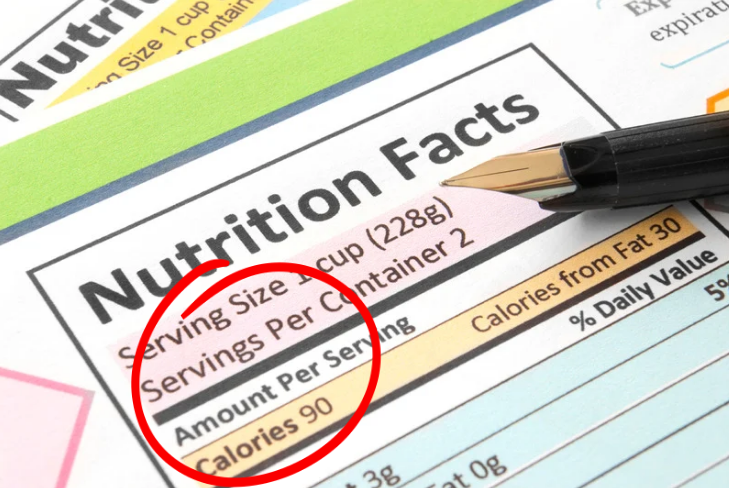
Want a snack? If you live in the U.S., your answer is probably yes! According to a report from Mintel on snacking in the United States, 94 percent of Americans snack at least once a day. In addition, 50 percent of adults snack two to three times a day. But what do folks consider a snack? The report revealed that 70 percent of people agree that, these days, any food can be considered as a snack.
Although snacking may help with hunger between meals, some people are snacking so much that it can be considered an extra meal. Eating too many snacks or "mini meals" throughout the day can lead to consuming too many calories, which will ultimately lead to weight gain or make it more difficult to lose weight, if that's your goal.
The Role of Snacks
Research shows that people who skip meals tend to over consume calories later in the day. Ideally, healthy snacks can be used to curb hunger during the times of the day where you find your tummy rumbling. This can be in the morning in between breakfast and lunch, between lunch and dinner, or if there is a long period between when you ate dinner and when you go to bed.
But how do you know what time is the best time for a snack? A general rule of thumb is that if you go five or more hours between eating during the day, it's likely a good time to insert a snack if you can't sit down for a proper meal. You can also keep a diary for a week and log the times throughout the day that you are hungriest. Use a scale from one to 10—with 10 being your most hangry—so you can determine if you are truly hungry or if you're just looking to nosh because you're bored or stressed.
Once you determine when to snack, the next step is to find healthy bites and mini meals. Snacks should always include essential nutrients your body needs to keep it healthy and feel satiated. Select foods from a variety of food groups, including whole grains, fruits, vegetables, low- or non-fat dairy, lean protein and healthy fats. Snacks should also be filling, which means they should include several food groups with fiber, protein and healthy fat to help keep you satisfied until your next meal. Protein and fat take time to digest, which makes you feel full for a longer period of time. You also want to keep snacks within a reasonable calorie range to prevent it from becoming a meal. A good calorie range is between 125 and 200 calories per snack.
Before you head to the pantry ravenous and without a plan, consider keeping a list of healthy snack ideas in your phone or on a piece of paper taped to a wall in your kitchen. This way, when that familiar feeling of hunger strikes, you'll be ready to munch responsibly. Start with these ideas and then add your own as you discover snacks that satisfy you:
- Non-fat, plain Greek yogurt topped with berries
- Apple or pear slices with peanut or sunflower butter
- Sliced hard-boiled egg on whole-wheat crackers with tomato
- Low-fat cottage cheese topped with sliced melon and slivered almonds
- Trail mix with a small handful of nuts (cashews, almonds, pistachios, walnuts), a small handful of dried fruit (apricots, raisins, tart cherries, mango) and one tablespoon of dark chocolate chips.
- Hummus with vegetables like peppers, carrots, celery, jicama for dipping
- Several mozzarella balls with cherry tomatoes topped with balsamic vinegar and one teaspoon of extra-virgin olive oil
- A small smoothie (six to eight fluid ounces) with non-fat, plain Greek yogurt, frozen berries and a splash of 100 percent pomegranate or cranberry juice
- Turkey and cheese roll-ups with one slice each of low-sodium turkey and your favorite cheese
Gain Control of Your Snacking
Between choosing the wrong foods and over-snacking, there are numerous ways snacking can sabotage your healthy eating plan. If you find yourself snacking too often or too much in one sitting because you're mindlessly eating or perhaps trying to feed cravings, try implementing these seven registered-dietitian-recommended tactics:
1. Plan Ahead
To keep snacks from being bigger than meals (especially before bedtime) Bonnie Taub-Dix, R.D.N., the creator of BetterThanDieting.com and author of "Read It Before You Eat It", recommends planning ahead and not waiting until you're left with spontaneous, last-minute decisions. "Plan your bedtime snacks earlier in the day by portioning them out—put nuts or dried cereal in zippered snack bags and buy individual sizes of chips, hummus, popcorn and other snacks that generally come in oversized packages."
2. Keep Portions Under Control
Sometimes snack portions can be deceptive and Dr. Joan Salge Blake, Ed.D., R.D.N., L.D.N., F.A.N.D., a nutrition professor at Boston University and the host of the health and wellness podcast, SpotOn!, gives a perfect example: "For less than 200 calories for a one-ounce handful, nuts are a ridiculously healthy snack providing yummy fiber, protein and heart-healthy unsaturated fat. But if your hand is the size of a baseball catcher's mitt or that one handful morphs into two or three, the calorie content of your snack will start to resemble your dinner." Instead of relying on visual cues that can be deceiving, Dr. Salge Blake suggests buying the preportioned, one-ounce packets of nuts or dole them out in a shot glass to keep your portions in line with a snack, not a meal.
3. Don't Eat Directly from the Package
It's all too easy to over-snack with foods like chips, crackers and nuts when they are eaten straight out of the package. "I always take a portion and put it in a bowl or on a plate when I want something to snack on," explains Emily Cooper, R.D.N. of Sinful Nutrition. "If I'm still hungry, I'll take more, but putting it in a separate container helps from mindlessly eating way more than I was hungry for." <pagebreak>
4. Avoid the "Low-Cal" Snack Trap
"It's very common to choose diet or 'low-cal' snack foods in an effort to eat less and lose weight," says Leanne Ray, M.S., R.D.N., owner and founder of Leanne Ray Nutrition. However, while working with clients, Ray has found that this tactic usually backfires, leading to cravings and overeating later. "I recommend choosing enjoyable meals and snacks that also contain some protein, fiber and fats," explains Ray. Including these nutrients in your snack can help you feel full and satisfied.
5. Take A Pause Between Bites
Kristen Smith, M.S., R.D.N., L.D., the founder of 360 Family Nutrition and spokesperson for Academy of Nutrition and Dietetics recommends taking a pause after every few bits to ask yourself if you're still hungry. "As you pause, stop and assess if you still feel stomach hunger. This trick will allow you to slow down while eating and better listen to your stomach's hunger cues."
6. Determine Your Mindless Snacking Triggers
"A powerful, eye-opening trick I use with clients snacking mindlessly throughout the day is to have them keep a snacking log recording what is triggering this behavior," says Cheryl Mussatto M.S., R.D., L.D., a clinical dietitian and author of "The Nourished Brain". Mussatto explains that it is often not simply hunger, but rather a combination of emotions (like boredom, stress or comfort), cravings, availability or certain activities and habits, such as sitting down with a snack to watch TV, that drives our snacking. "Once [my clients] pinpoint their trigger(s), they can work on changing certain behaviors to break the cycle."
7. Be Forgiving
Eating healthy is a learning process and if you end up eating something not-so healthy, you can use it as an opportunity to learn and evolve. Shanna Hutcheson, R.D., L.D. of Wellness For The Win says that when it comes to snacking, it's important to "give yourself unconditional permission to eat a wide variety of foods, and fuel your body often." Hutcheson explains that restriction almost always leads to binging. "The more we provide our bodies with foods that both nourish and satisfy us, the less likely we are to overdo it on sweet or salty snacks when the opportunity presents itself." And if you do overdo it? "Don't beat yourself up," Hutcheson says. "Figuring out your body's needs is a learning process. Give yourself grace, and move on!"
For many, snacking is ingrained in the way that we live, whether it's popcorn for Saturday movie night or your mid-afternoon fruit salad at work. By taking control of the habit and implementing healthier options and a more intentional mindset, we're better able to manage our hunger hormones and cravings for the long run. Take a hard look at your snacking habit and see where you can make tweaks to become a smarter, healthier and happier snacker!













